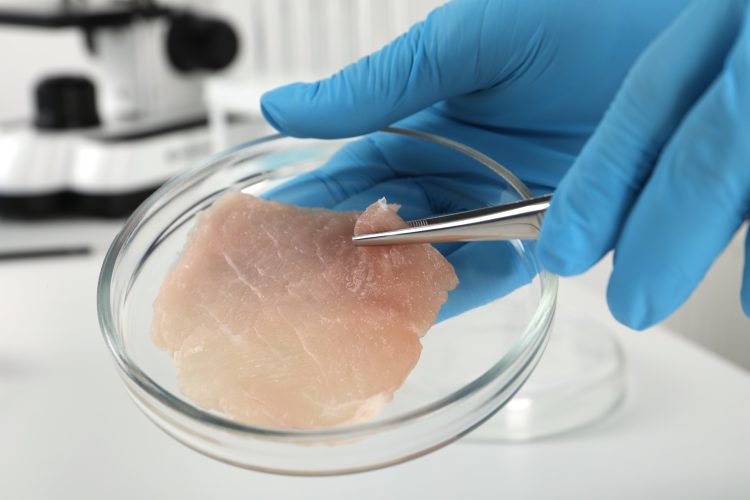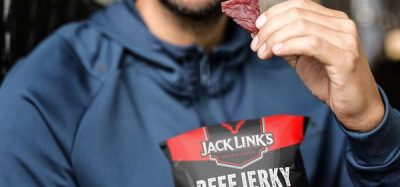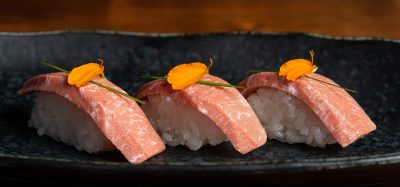Scientists produce world’s first cultivated steak
- Like
- Digg
- Del
- Tumblr
- VKontakte
- Buffer
- Love This
- Odnoklassniki
- Meneame
- Blogger
- Amazon
- Yahoo Mail
- Gmail
- AOL
- Newsvine
- HackerNews
- Evernote
- MySpace
- Mail.ru
- Viadeo
- Line
- Comments
- Yummly
- SMS
- Viber
- Telegram
- Subscribe
- Skype
- Facebook Messenger
- Kakao
- LiveJournal
- Yammer
- Edgar
- Fintel
- Mix
- Instapaper
- Copy Link
Posted: 1 February 2023 | Grace Galler | No comments yet
A UK-based company has produced what they claim to be the first-ever cultivated steak fillet made using pork cells.


A team of scientists at 3D Bio-Tissues (3DBT) have announced that they have produced the world’s first 100 percent cultivated steak.
The steak fillet, reportedly made entirely from pork cells, measured nine cm in width, four cm in length and one cm in height, making it the same shape and size as a small fillet of traditional pork meat. The scientists have also said that the fillet replicates pork’s flavour and texture.
Produced using a cell booster that is reportedly serum-free and animal-free, 3DBT claim that the fillet is 100 percent meat and, with the help of City-mixTM (a patented media supplement which eliminates the requirement of conventional plant-based scaffolds, blends or fillers), 3DBT has said that it believes that “this is the world’s first 100 percent cultivated pork steak to be produced and tasted”.
Labelling this as a “milestone”, 3DBT are now planning to produce a showcase product. This will take the shape of a full-scale fillet of cultivated pork that is set to be presented, cooked and eaten at a public event in the coming months.
“This is a significant scientific breakthrough which has very positive implications not just for BSF and 3DBT but also for the UK and the cultivated meat industry as a whole,” said Che Connon, Chief Executive of 3DBT.
“We are absolutely delighted with the appearance, taste, aroma, and texture of our cultivated pork, which is the first time we have fully sampled our product. Our cruelty-free fillet has exceeded our expectations in all respects, and we are extremely excited about the technological progress we are making and the impact this could have on our industry.”
The cultivated steak making process
3DBT has said that it used pig cells to produce the cultivated pork fillet. Cells were extracted from a pig and were then put into a cell-culture environment, allowing them to grow and divide.
Following that, the cells were then cultivated using the company’s proprietary structured meat technology along with their patented City-mixTM cell booster which turned the cells into structured meat.
Carrying out the testing of the product, Dr Che Connon, Professor of Tissue Engineering at Newcastle University and 3DBT’S Chief Executive Officer, and 3DBT’s Chief Science Officer, Dr Ricardo Gouveia, tested the fillet in the lab for various qualities in both its raw and cooked states.
Additionally, the scientists sampled the product to test its similarity to eating conventional meat.
In its raw state, the scientists claim that the cultivated steak fillet was “very similar in appearance to conventional meat with fibres clearly visible”.
When cutting the fillet, they said that it displayed “similar structural integrity to raw conventional meat, including resistance to breaking and compression”. What’s more, the scientists even said it was the “same to the touch in terms of consistency and elasticity and, as with fresh traditional meat, had no obvious aroma while raw”.
The scientists pan-fried the fillet and said that it “exhibited an element of shrinkage, as would be expected with high-quality traditional meat”. They also claim that the fillet “seared easily and showed the typical charring and crisping on its surface”, with the aromas being “identical” to those of frying traditional pork.
What’s next for 3DBT?
Professor Connon has said that 3DBT will take the findings from the testing process to inform the production of a full-scale fillet.
The fillet will then be showcased, cooked and eaten by a select panel at an upcoming event in London. 3DBT has said that it is aiming to demonstrate how its structured meat technology can “accelerate the delivery of cultivated products to consumers and future suppliers alike”.
The company has also highlighted that it is hoping to work with manufacturers and supermarkets to sell cultivated meat and separately with fashion companies to produce cultivated leather using the same tissue-templating process but with skin cells.
“This has the potential to significantly reduce livestock farming, cutting the greenhouse gases, water and energy used in meat production,” said 3DBT.
“We look forward to taking the findings through to the next stage of development, focused on producing a chef-ready product for public consumption,” concluded Connon.
Related topics
Cultured Meat, Environment, New product development (NPD), Proteins & alternative proteins, Research & development, Sustainability, Trade & Economy









